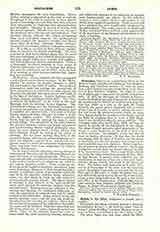

Ophir, in the Bible, designates a people and a country. The people, for whom a Semitic descent is claimed, is mentioned in Gen., x, 29, with the other “sons of Jectan”, whose dwelling “was from Messa as we go on as far as Sehar, a mountain in the east” (Gen., x, 30). The place Ophir was that from which the Bible represents Solomon‘s fleet bringing gold, silver, thyine (probably santal) wood, precious stones, ivory, apes, and peacocks (III Kings, ix, 26-28; x, 11, 22; II Par., viii, 17-18; ix, 10). Its location has been sought where the articles mentioned are native productions; still, while Ophir is repeatedly spoken of as a gold-producing region (Job, xxii, 24; xxviii, 16; Ps. xliv, 10; Is., xiii, 12), it does not follow that the other articles came from there; whether they were natural products, or only bought and sold there, or even purchased by the merchantmen at intervening ports, cannot be gathered from the text, as it states merely that they were fetched to Asiongaber. The Bible does not give the geographical position of Ophir; it only says that the voyage out from Asiongaber and back lasted three years (III Kings, x, 22). Scholars have been guided in their several identifications of the site by the importance they attach to this or that particular indication in the sacred text—especially the products brought to Solomon—also by resemblances, real or fanciful, between the Hebrew names of Ophir and of the articles mentioned in connection therewith and names used in various countries and languages. The Greek translators of the Bible, by rendering the Hebrew Ophir into Sophir, the Coptic name for India, would locate the Biblical El Dorado in India, according to some in the land of the Abhira, east of the delta of the Indus, according to others, on the coast of Malabar or at Ceylon, and according to others still in the Malay Peninsula. The opinion that it was situated on the southern or southeastern coast of Arabia has many advocates, who contend from the text of Gen., x, 29, 30, that Ophir must be located between Saba and Hevilath. Another opinion says it was not in Asia, but either on the southeastern coast of Africa (Sofala) or inland in Mashonaland.
CHARLES L. SOUVAY

